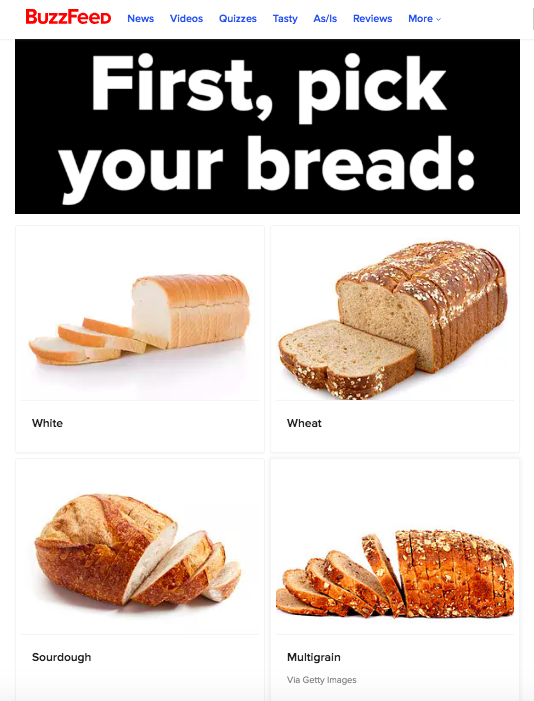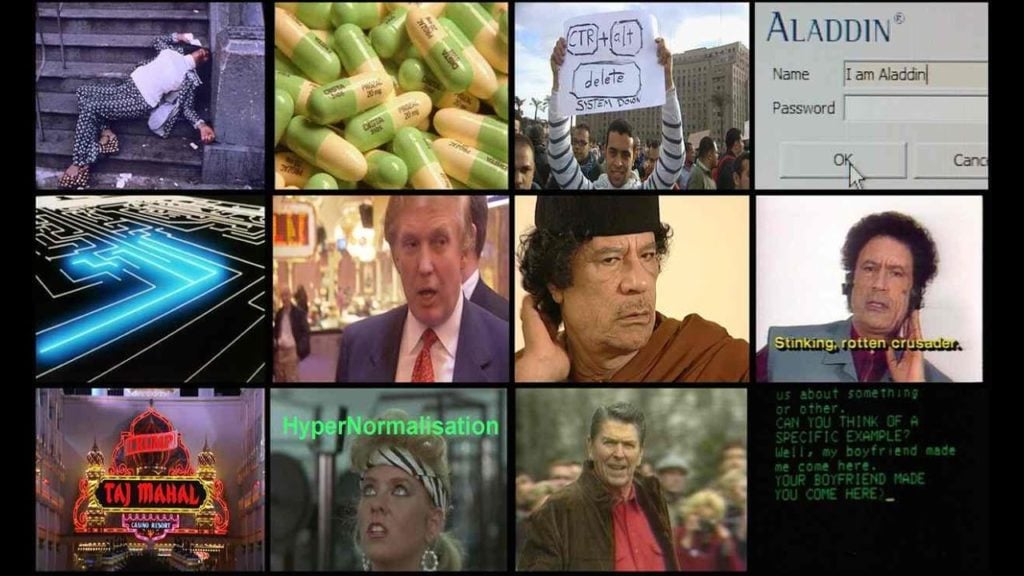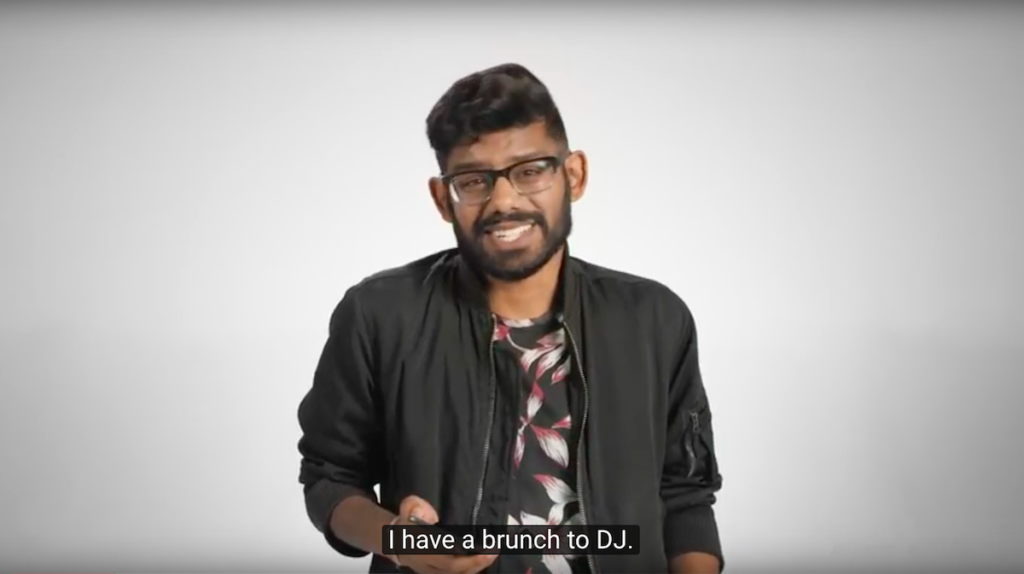Opinion
The Museum of Voting Shows What Everyone Gets Wrong About Youth and Politics. Here’s Why
We need sharper ways to talk about the politics of digital distraction.

We need sharper ways to talk about the politics of digital distraction.

Ben Davis

Hey, have you heard about the Museum of Voting? It’s this really rad pop-up environment. Long lines, tomorrow only, an immersive “booth” experience, everyone gets a sticker….
Oh, never mind—this joke is not really good enough to play along with for too long. What I’m talking about is that “Get Out the Vote” gag making the rounds on the internet in the final run-up to these all-consuming midterms. The clip, courtesy San Francisco marketing firm Gold Front, riffs on immersive, art-context-inspired environments like the Museum of Ice Cream, Rosé Mansion, the Color Factory, and so on.
It’s out to tease (or shame? It’s not clear) distracted digital natives into the voting booth by rebranding voting as an opportunity to “feed the ‘Gram”—as if we have learned nothing from the great Justin Timberlake “Voting Selfie Gaffe” catastrophe of ’16.
I’ll just let you watch it below:
It’s clever—though the “haha, good one bro!” turns to ash in your mouth, a bit, because you really do get the feeling that the people who conceived the Museum of Voting believe that their target constituency really is made up basically of entitled twerps.
Which, I must say, may not be the best way to mobilize people, or to propagandize the righteousness of your cause.
The attempt to challenge presumed millennial shallowness by addressing it in the most shallow possible way reminds me of Buzzfeed’s recent “Build A Grilled Cheese And We’ll Tell You Something You Need To Do Right Now” quiz. No matter what kind of grilled cheese you made, the answer was, “You need to register to vote RIGHT NOW!”
You’ve got to love the idea of using rigged voting to exhort people to vote.

Screenshot from Buzzfeed’s “Build A Grilled Cheese And We’ll Tell You Something You Need To Do Right Now.”
With hate crimes and nativist rhetoric transfixing the news, and the entire culture focused on tomorrow’s midterms as a referendum on Trump, all this seems like small beer. But the perspective represents a larger trend in commentary, fixated frantically on cracking the code of distracted millennials.
And it’s telling that, in the face of this urgent moment, that’s still where we are at.
In an editorially brilliant act of trolling, New York magazine last week ran a piece on “12 Young People on Why They Probably Won’t Vote.” It concludes with the wisdom of Nathan, 28, from San Diego:
It’s a wild theory, but setting voting up so that it’s all on social media, putting all that information in just an Instagram Story, in a Snapchat filter or whatever—bulleted-out, easy-to-read, digestible content—would encourage me to vote.
Tag that #facepalm.
New York Times internet critic Amanda Hess wrote a piece recently on the evils of Instagram Trap environments. She dubbed them “voids of meaning,” and, repeating herself, harbingers of “the total erosion of meaning itself.”
They’re not my cup of tea either. But if such attractions are to serve us now as a political metaphor, or if we are to imagine their audience as some kind of constituency to be activated, we really do have to look for some meaning in what they represent.

Promo image for the Rosé Mansion. Image courtesy Rosé Mansion.
And I think there are really two ways to look at them.
If you boil their pleasures down to the essentials, these installation-like environments are quite deliberately neither critical nor educational. They are fixated instead on bright colors, bold images, and places to feed back the spectacle of yourself looking good and being adulated by your networks.
Now, think now of how Donald Trump is said to prefer to get his daily briefing. He doesn’t like analysis or in-depth reports. He likes pictures. He likes “killer graphics.”

U.S. President Donald Trump holds his notes as he talks about his meeting with Russian President Vladimir Putin, on July 17, 2018. Photo by Mark Wilson/Getty Images.
Want him pay attention? Make sure his name is mentioned as often as possible, in as flattering a context as possible. He even gets a daily folder of positive material about himself, which includes “pictures of Trump on TV looking powerful.”
Sounds a lot like the same kind of post-literate narcissism, right?
I can’t help but think that if you are already fighting on that terrain, you are fighting at a disadvantage.
That bit of analysis may sound like taking a stupid thing too seriously—like sipping a McFlurry and talking about its “notes of flavor” before spitting it out in a small cup. But it fits right in with a bigger political-cultural narrative that’s out there. This is, in fact, a variation on the “HyperNormalisation Thesis,” after Adam Curtis’s 2016 documentary of the same name.

Adam Curtis’s Hypernormalisation.
That panoramically unsettling work is too complex to recapitulate here, juxtaposing decades of archival footage to make its case, from Ronald Reagan’s opportunistic maneuvering in the Middle East, to the US security state’s seeding of UFO conspiracy theories, to Silicon Valley’s roots in 1960s counterculture’s flight from politics into self-expression.
In essence, however, HyperNormalisation argued that as the economy had grown more complex and political narratives had stopped delivering, society had retreated more and more into fantasy narratives at all levels, cultural, political, and technological.
As a portent, Curtis at one point discusses the early example of ELIZA, a program created in the 1960s by computer scientist Joseph Weizenbaum as a parody of psychotherapy. Essentially ELIZA simply took statements from a user and, in the stereotype of an analyst, repeated them back in question form.
Weizenbaum found that users tended actually to love the ELIZA experience, finding it extremely comforting—even imputing a nonexistent wisdom to it. “In an age of individualism, what made people feel secure was having themselves reflected back to them, just like in a mirror,” Curtis’s voiceover theorized.
HyperNormalisation was released before the 2016 election, at the point when Hillary Clinton still appeared a shoe-in. Yet the film fixated on the rise of Donald Trump, the shambolic reality show pitchman, as the key symptom and beneficiary of this society-wide retreat into the convenience of self-referential realities.
And so, when the impossible happened in November ’16, HyperNormalisation acquired the cachet of prophecy for a lot of cultural critics.
What do you do with this insight though? As Owen Hatherley wrote of Curtis’s opus at the time, it delivers a bit too much of a sense of resistance-is-futile closure, its master narrative of the entropy of meaning contenting itself with “adding to the helplessness.”
Let me then emphasize a second possible reading of the phenomenon in question here.
Because strangely, if on one level, the Museum of Voting-style approach doesn’t take the meaning of digital distraction seriously enough, assuming it’s just kind of a joke to be mocked away, on another it takes it too seriously—assuming that its subjects really are that shallow, really care mostly about likes and selfies and such.
The most maddening thing about that Museum of Voting spot is the part where it has the imagined target hipster offer up his excuse for staying away from the polls. “I have a brunch to DJ!”

Screenshot from Museum of Voting clip on YouTube.
I have no doubt at all that hyper-driven contemporary consumerism has liquidated people’s attention spans in whole new and insidious ways. Fortunes have been built on increasing digital “user engagement,” yielding psychic effects that seemingly terrify even the tech industry (at least when it comes to their own children).
Cutting against that very pervasive state of affairs probably takes something more than moralistic snark. “Maybe adults of all ages should question their impulse to write off as the product of personality flaws what’s clearly a widespread social epidemic,” the journalist and commentator Michelle Chen wrote recently.
Here’s a thought: If the particular type of experience represented by Instagram Trap-style popups present themselves as purely comforting stages for affirmation, and if that experience has some kind of particular magnetic appeal at this particular moment in history—don’t you think that might have something to do with the fact that the world happens to be particularly terrifying right now?
The future looks like it is collapsing. Of course people focus on the present. Your value in this hyper-competitive economy is uncertain. Of course you want affirmation of your worth. The news is relentlessly awful. Of course you are tempted to tune it out.
The mythical brunch-DJing millennial (and really post-millennial) demographic that is being addressed here also happens to suffer from record levels of anxiety and depression.
Faced with a sense of permanent crisis, this is what people do: they try to stop the racing thoughts; they go to their “Happy Place.”

Graphic for Happy Place. Image courtesy Happy Place.
Just as with much of the commentary rooted in yuk-yuking and eye-rolling about how Trump is an idiot, the way that “millennial” culture is being figured here seems more effective at securing a sense of superiority for the audience that already agrees than motivating anyone new. In that way, the information-siloed, self-absorbed image it addresses actually feels to me like a distorted reflection.
If you are really out to move people who have become disengaged or who feel like politics is rigged or that their opinions don’t matter, maybe leading with a strong clear message about how life could get better is the way to go, rather than patronizingly addressing your audience as the Idiot Demographic.
Long ago, the famous educator Paulo Freire showed in his book Pedagogy of the Oppressed that you could teach dispossessed Brazilian peasants literacy and math in a surprisingly short amount of time—as long as you didn’t present its value abstractly, as valuable “just because” authority said so, but explained it in a way that connects to their lives, in a non-patronizing way.
Nathan from San Diego can be convinced to inform himself, if the narrative of why is clear enough.